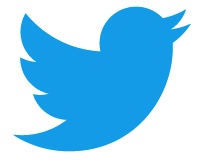What’s the value of a retweet? Or a follower? Those questions get asked all the time in discussions about social media and advertising. Now Twitter is announcing a partnership with Datalogix that should give large consumer packaged goods brands some answers.
The basic goal of the program is to tell Twitter advertisers whether their campaigns actually drove consumers into stores to buy their products. That’s something Datalogix is already working on with companies like Facebook, and Ameet Ranadive, who leads the revenue product team at Twitter, told me that Twitter is employing a similar process as other social networks for tracking those purchases.
At the same time, he said, “The approach we took was pretty different.” In other words, the process is the same, but Twitter is trying to measure different things: “Most of [Datalogix’s] studies on other platforms have focused on impressions and exposures.”
In order to quantify offline sales impact, Twitter will divide users into different groups, namely those who have been exposed to a company’s organic or promoted tweets and those who haven’t, and then it will use Datalogix to compare those groups’ buying activities.
In fact, Twitter says it has already conducted preliminary studies on 35 brands, and it came up with three general conclusions:
- “Engagement drives greater in-store sales.” When users engaged with Promoted Tweets, compared to a “statistically identical control group,” there was a 12 percent lift in purchases, and even if they saw the tweet but didn’t engage with it, there was a 2 percent lift.
- “Brands’ organic tweets drive sales.” There was an 8 percent sales lift among users who saw a brand’s organic (i.e. unpaid) tweets versus those who didn’t, and the lift was three times greater if they saw five or more organic tweets.
- “Followers who see Promoted Tweets buy more.” Even among people who already followed a brand, there was a 29 percent lift among those who saw Promoted Tweets compared to those who only saw organic ones.
Ranadive noted that Twitter charges advertisers for engagement, not impressions, yet the study suggests that even the impressions are valuable. I asked if that makes him reconsider Twitter’s pricing structure, and he said no — paying for engagement is a nice way to “align the incentives” because it encourages advertisers to promote high-quality content.
He also emphasized the importance of privacy in this arrangement. Ranadive said Datalogix sends its users’ email addresses over to Twitter in the form of scrambled hashes, no individual purchase data is shared, and users can always opt out of Datalogix measurement.
